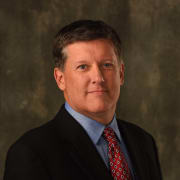The (Possible) New-Look PGA Tour Will Further Enrich the Biggest Stars

The PGA Tour is looking to get leaner and meaner, a move that has merits but also some real-world implications, all in the name of a cleaner look, faster play and undoubtedly another deference to the name players.
As we’ve seen in the past few years, there’s been a shift in men’s professional golf from looking out for the masses to taking care of the stars, the ones who drive the commercial value of the entity while attracting eyeballs, whether in person, online or through broadcast entities.
The PGA Tour is not selling its latest proposal in that manner, but that is surely what is in play along with the more stated and modest goals of creating a more competitive environment while making the experience better for those participating and perhaps speeding things along.
Earlier this week, the PGA Tour sent a 23-page deck outlining the recommendations of the Player Advisory Committee and various subcommittees that spent four months studying the issue of reducing field sizes and thus cutting back on the number of exemptions.
What is being proposed for a vote of the PGA Tour Policy Board next month—to be implemented in 2026—is no small tweak. It would significantly alter the dynamics of the all-exempt Tour that dates to 1983, when it first put in play the 125-player exemption category off the money list, now the FedEx Cup points list.
Among the changes to be voted on:
- Fully exempt cards reduced from 125 to 100 starting in 2026.
- Field sizes reduced to as low as 120 players in some cases, but down from 156 in the summer to 144 or 132.
- Exemptions on the the Korn Ferry Tour cut from 30 to 20.
- Exemptions for the DP World Tour top 10 (players not otherwise exempt off the Race to Dubai) remain the same.
- The PGA Tour Qualifying Tournament would still advance five players, but no ties.
- Monday qualifying will be cut back or eliminated, depending on the field size.
- Some events will see their restricted sponsor exemptions removed and replaced by players from the priority list.
There is no doubt this will make the Tour more competitive. Starting in January, players know they will have to finish among the top 100, not the top 125, in order to remain exempt for 2026 if they are not otherwise exempt via some other category.
And reducing field sizes, in some ways, will make for faster play. A 156-player field with a two-tee start is not manageable. It means 13 groups of three must tee off the front and back sides, and the math doesn’t work when players make the turn. Backups are inevitable. It’s why rounds take 5-plus hours Thursday and Friday.
A field of 144 isn’t much better, but 132 is ideal—although this still doesn’t solve slow-play issues that are not being legitimately addressed via stroke penalties. Players are still slow, and the fine policy is hardly a deterrent. So while this may help some, it’s simply a band-aid on the overall issue.
And going to 120-player fields? That is simply a nod to the best. You have to beat fewer players to make it to the weekend, so while competition might be keener to stay on Tour, once there, it will actually be lessened.
The top players will be in the limited-field signature events, five of which have no cut. And then they will be playing in events that have smaller fields, making it easier to get to the weekend paydays.
“I just think the direction they are going is magnifying the value of having a PGA Tour card,” said Peter Malnati, a member of the Policy Board, in an interview with SiriusXM Radio.
Malnati added: “The membership of the Tour is too big. Our events are too big. And there are people at the bottom who are supposed to be fully exempt players on Tour who don’t know the value of the card.”
The tradeoff is impacting opportunities. The PGA Tour, from its formation in 1968, has been about looking out for the membership as a whole. The commissioner’s mission has been to enhance playing opportunities, not decrease them. In fact, executive compensation and bonuses have been tied to adding such opportunities and increase purses. Obviously, there’s no word on how that might change.
“To be honest, I don’t love the changes but that’s probably because I feel threatened by the number of cards going down from 125 to 100,” said Michael Kim, a PGA Tour player who has one career victory, in a post on X. “It’s my job to improve and continue to get better and make sure I’m not in the situation I am this year.”
Thoughts on the proposed field/card changes:
— Michael S. Kim (@Mike_kim714) October 29, 2024
-To be honest, I don’t love the changes but that’s probably because I feel threatened by the number of cards going down from 125 to 100. It’s my job to improve and continue to get better and make sure I’m not in the situation I am this… pic.twitter.com/CDJZXEa0mf
Kim is currently 115th in the FedEx Cup standings with three events to play, meaning he’s in good shape to retain his card via the top 125 for 2025. But a year from now, that situation would be tenuous, on the outside looking in.
Falling short, a player in his position could go to the PGA Tour Q-School to try and get one of five exempt spots. Or he could play out of the 101-to-125 category, which will allow for decent access, just as the 126-to-150 category does now.
Kim went on to say that he believed the changes will be good for pace of place because “getting field sizes down is a crucial part of that ... I’m a real believer that our slow player problem is a traffic/too many people problem more so than an actual slow play problem.”
He might get some pushback on that, but clearly less players makes flow easier.
“There were times when I playing from the past champ status (an exemption category that comes after the top 125 and KFT) a few years back where I felt that I shouldn’t be able to play these events,” Kim said. “There was absolutely some bloat.”
Kim said he believes numerous players would still get into fields via the 100-to-125 category and that this will be a boon to KFT players, who have a better chance of getting into all the regular events.
“I think the most important part of this is that the KFT graduates get a fair chance at keeping their cards,” he said. “When you promise a tour card but you’re only getting in (opposite) field events and barely full field events, a bad start to the (year) and you are so behind the 8-ball it’s unfair.”
It can be argued that the Tour could have leaned into this a bit more slowly. Gone from 125 to 110, for example, and see how things work out.
There are bound to be unintended consequences.
Players often secure endorsement deals based on being among the top 125 exempt players. Does that change to 100? Are other opportunities lost?
It’s all interesting to note, for example, that in 2020 Wyndham Clark was 110th in FedEx Cup points, which would have left him without full status the following year. (It’s also fair to point out that had the new proposed rules been in place, Clark might have played more to try and move up.)
At the Arnold Palmer Invitational earlier this year, Clark was asked about comments made by Rory McIlroy that he’d like to see fewer exempt cards and a more “cutthroat” tour.
“I think it would be amazing if our Tour was 100 guys, and we have 20 guys that get relegated every time, every year, doesn't matter who you are,” Clark said. “It would be exciting. Because you come down to the end of the year, people are looking who is going to win the FedEx Cup, and then you're looking at who is not going to be here next year. So, yeah, I'm probably with Rory on that.
“I don't know what that number is, but I think it's just nice to elevate the product and make it to where the best players are playing on TV more often and against each other.”
The Tour is not likely to go down the road of relegating players solely based on FedEx Cup points. Clark, for example, got a five-year exemption for winning the U.S. Open. If he has a poor year in 2025 and falls outside the top 100, he’s safe for 2026.
Clark is also firmly entrenched among the top 10 in the Official World Golf Ranking, he finished eighth this year in the FedEx Cup, and his exemption—due to winning at Pebble Beach in February—is through 2029.
So he’s on the inside, looking at a system that will likely enrich him more.
The old motto still applies for those not so fortunate: “Play better.” Nonetheless, this is a sizable shift in philosophy that has plenty of positives as well as questions still to be answered.
